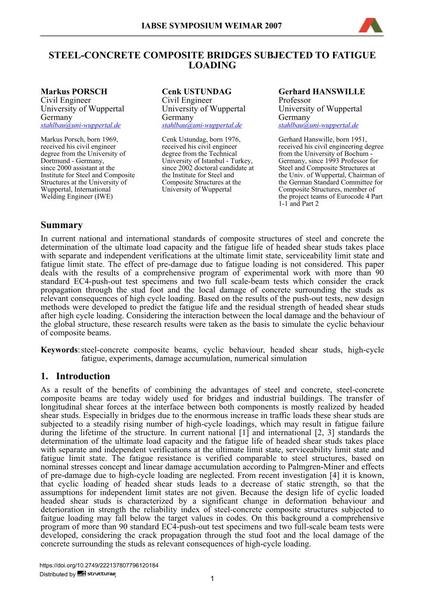Steel-concrete composite bridges subjected to fatigue loading

|
|
|||||||||||
Détails bibliographiques
| Auteur(s): |
Markus Porsch
Cenk Üstündag Gerhard Hanswille |
||||
|---|---|---|---|---|---|
| Médium: | papier de conférence | ||||
| Langue(s): | anglais | ||||
| Conférence: | IABSE Symposium: Improving Infrastructure Worldwide, Weimar, Germany, 19-21 September 2007 | ||||
| Publié dans: | IABSE Symposium Weimar 2007 | ||||
|
|||||
| Page(s): | 174-175 | ||||
| Nombre total de pages (du PDF): | 9 | ||||
| Année: | 2007 | ||||
| DOI: | 10.2749/222137807796120184 | ||||
| Abstrait: |
In current national and international standards of composite structures of steel and concrete the determination of the ultimate load capacity and the fatigue life of headed shear studs takes place with separate and independent verifications at the ultimate limit state, serviceability limit state and fatigue limit state. The effect of pre-damage due to fatigue loading is not considered. This paper deals with the results of a comprehensive program of experimental work with more than 90 standard EC4-push-out test specimens and two full scale-beam tests which consider the crack propagation through the stud foot and the local damage of concrete surrounding the studs as relevant consequences of high cycle loading. Based on the results of the push-out tests, new design methods were developed to predict the fatigue life and the residual strength of headed shear studs after high cycle loading. Considering the interaction between the local damage and the behaviour of the global structure, these research results were taken as the basis to simulate the cyclic behaviour of composite beams. |
||||
